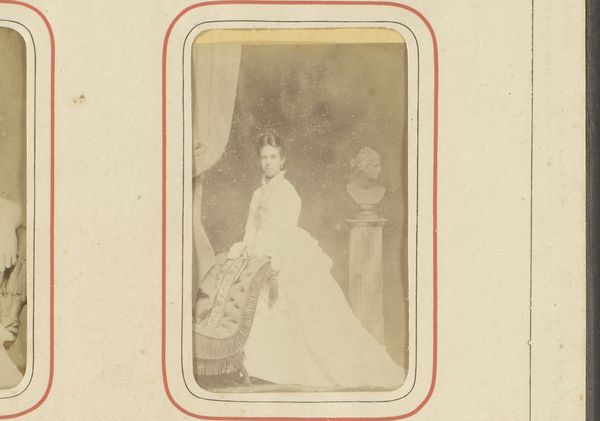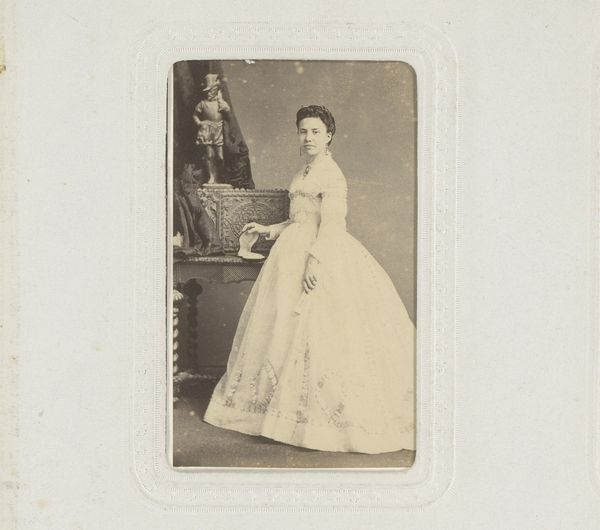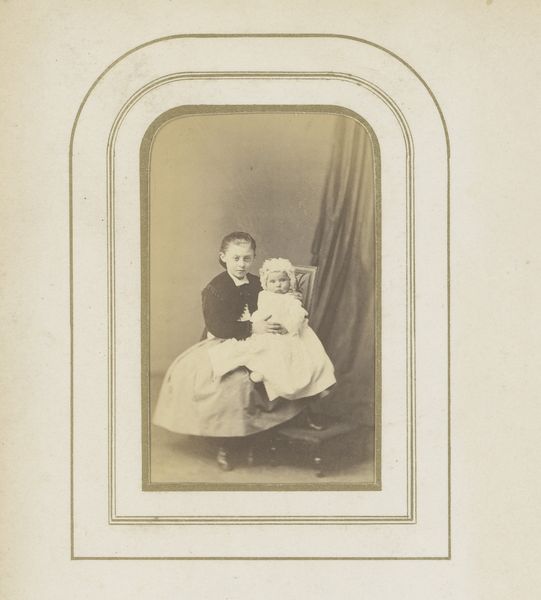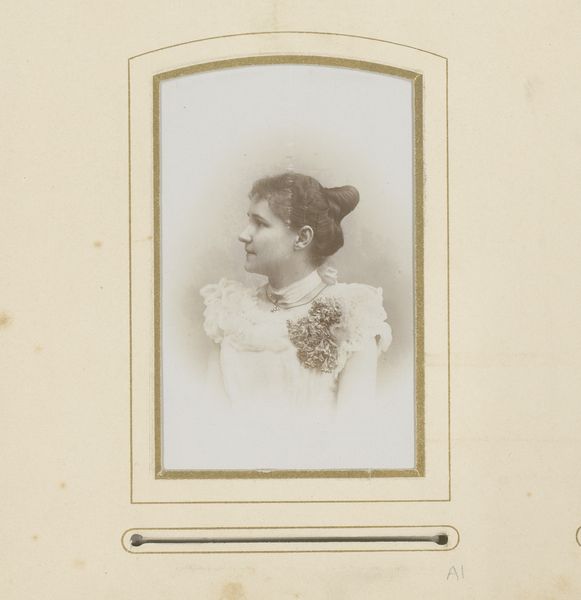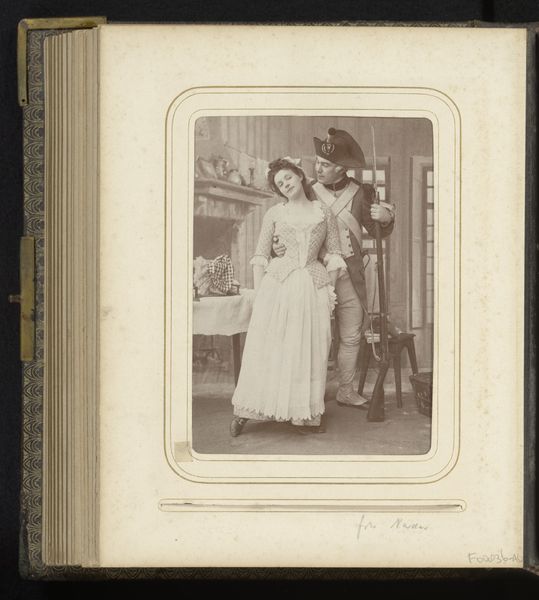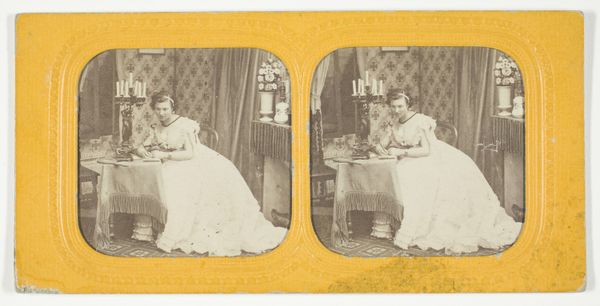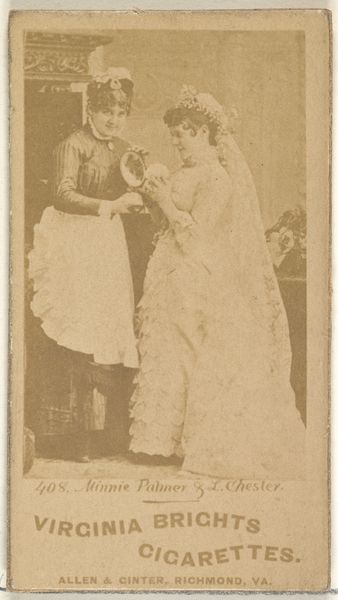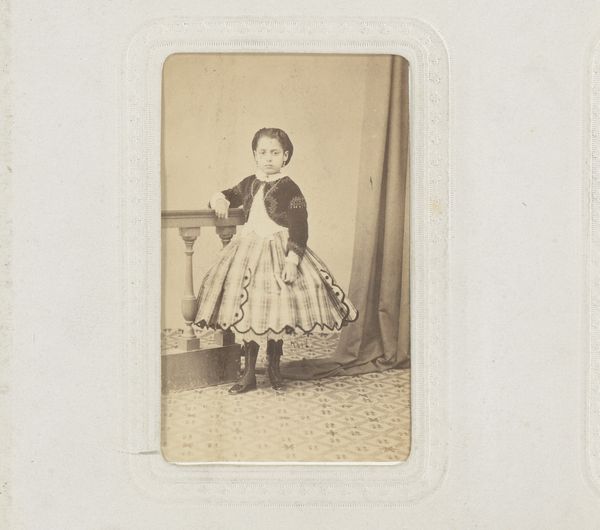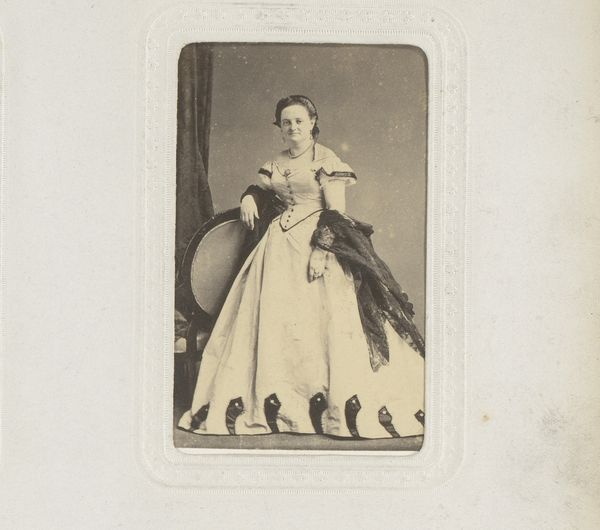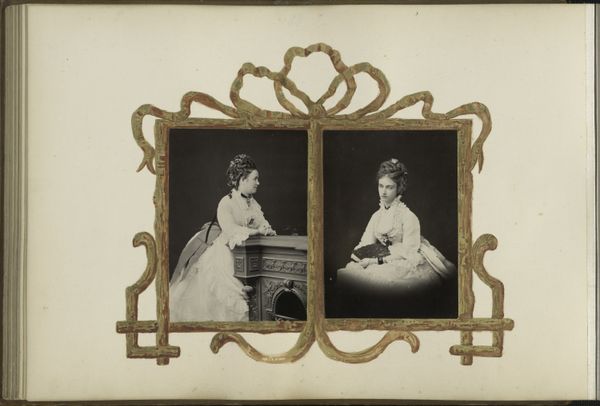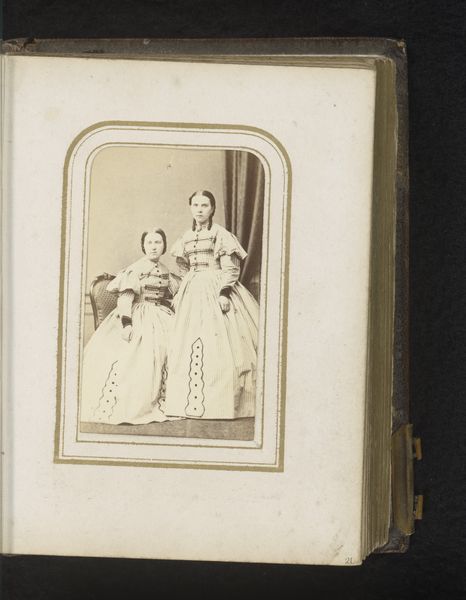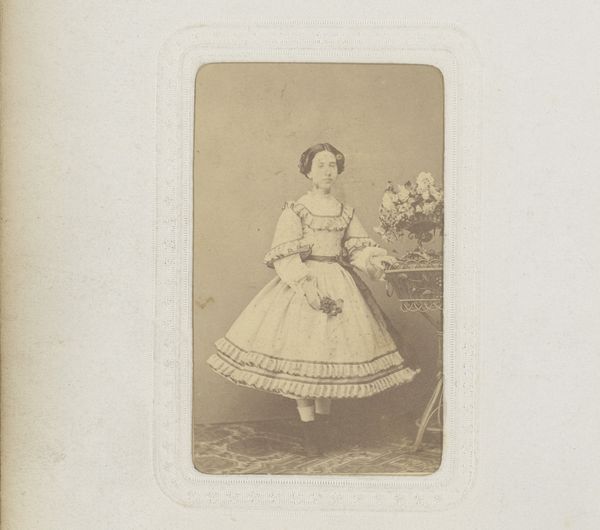
Portret van een jonge vrouw, staand bij een pendule voor een spiegel 1860 - 1870
0:00
0:00
franzweisbrod
Rijksmuseum
photography
#
portrait
#
photography
#
realism
Dimensions: height 83 mm, width 52 mm
Copyright: Rijks Museum: Open Domain
Editor: So, here we have a photographic portrait, titled 'Portret van een jonge vrouw, staand bij een pendule voor een spiegel', dating from between 1860 and 1870, currently residing at the Rijksmuseum, and made by Franz Weisbrod. The stillness of the young woman paired with the clock’s presence makes me feel quite contemplative. How do you interpret this work? Curator: I love how you immediately picked up on that stillness! The mirror doubles her presence, while the clock is, as you suggested, such a blunt symbol for time passing, or even wasted time, perhaps? To me, this photograph whispers of societal constraints. Don’t you feel that with those very full skirts, the tight sleeves and waistline and serious air she has? I wonder, what sort of life was mapped out for her, at the moment this picture was captured in history? Does the fact that we see both her physical person in the forefront, and a slightly more hazy view of her from the mirror imply something further for you? Editor: Yes, I do agree! There is something restrictive about it. The double presence of the young woman definitely intrigues me. It's like two versions of herself exist in this single frame, the one she presents to the world and a more thoughtful, internal one perhaps. And that clock, looming there, almost judging her use of time. Curator: Indeed! Photography was becoming increasingly popular during this period, so this feels very of-its-time, documenting a certain societal aspiration. This isn't just a portrait of a woman, but of a specific moment in her life and in history. And even beyond that – dare I say – a picture about being a woman in that specific time in history! I can’t help thinking, with an entire lifetime in front of her at the time this photo was taken, who did this person eventually become, and did she feel this capture represented what she aspired to be? Editor: It’s amazing how much narrative can be contained within one photographic frame. It's a testament to the artist's ability to evoke these deep and complicated considerations! I'll certainly never see a clock in a portrait the same way again! Curator: Or see myself in the mirror in the same light, perhaps?! Every viewing brings about something different, don’t you think? And it is always time well-spent to engage with these past captures of life in prior days…
Comments
No comments
Be the first to comment and join the conversation on the ultimate creative platform.
